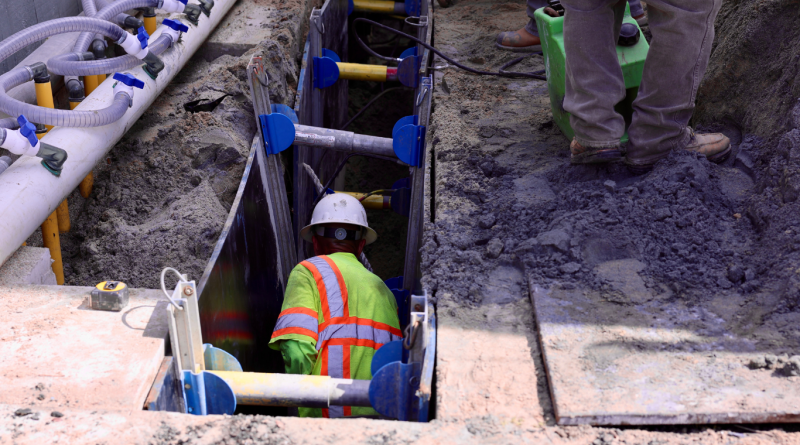7 Benefits of Shoring in Construction
Shoring is a cornerstone technique in modern construction, providing temporary support to buildings, trenches, and excavation sites. Whether stabilizing a structure during renovations or ensuring safety in deep excavations, shoring is indispensable.
Below, we discuss the top 7 benefits of shoring in construction and why it’s essential for maintaining safety and efficiency in today’s projects.
1. Structural Stability
One of the primary purposes of shoring is to maintain structural stability during construction or renovation. When structures are at risk of collapse due to excavation or modifications, shoring acts as a safeguard, distributing loads evenly and reducing stress on vulnerable components.
For instance, foundation repair often involves significant excavation beneath a building. Without shoring, the risk of collapse increases exponentially. By providing solid temporary support, construction teams can focus on their tasks without jeopardizing the building’s integrity.
2. Worker Safety
Construction sites are inherently risky, but shoring significantly minimizes dangers. Cave-ins, trench collapses, and falling debris are common hazards that shoring mitigates by creating stable work environments.
In trenching operations, for example, workers often face the danger of soil collapses. Shoring systems, including trench shields or hydraulic shores, hold back unstable earth, preventing catastrophic incidents. The Occupational Safety and Health Administration (OSHA) mandates strict guidelines for trench shoring to safeguard workers, underscoring its importance in modern construction.
3. Facilitates Complex Excavations
Deep excavations are a staple of construction, whether for building basements, laying utility lines, or creating underground parking structures. However, such projects pose risks of soil movement and collapses.
Shoring is vital for maintaining the integrity of excavation walls. Techniques like beam and plate shoring or hydraulic systems are tailored to specific project needs, ensuring stability in diverse soil conditions.
For instance, during the construction of subway systems or tunnels, advanced shoring is employed to prevent ground shifts that could jeopardize surrounding areas.
4. Protecting Nearby Structures
In densely populated urban areas, construction often occurs near existing buildings. Without proper precautions, vibrations and excavation can destabilize these adjacent structures, leading to costly damage or even collapses.
Shoring mitigates these risks by providing additional support to both the construction site and nearby buildings. For example, underpinning—a specialized form of shoring—is often used to strengthen the foundations of adjacent structures during deep excavations.
Real-world cases have shown how failure to implement proper shoring can lead to disastrous outcomes, from cracked walls to total structural failures.
5. Supporting Structural Modifications
Renovating or expanding existing structures often involves removing load-bearing elements such as walls, columns, or beams. Without temporary reinforcement, these modifications can compromise the building’s overall stability.
Shoring provides the necessary support during these transitional phases. Techniques like dead shoring, which supports vertical loads, are commonly employed during renovations of historic buildings or skyscrapers.
6. Optimizing Trench Safety and Productivity
Utility installation and repair projects rely heavily on trenching, which often requires deep, narrow excavations. These trenches are prone to soil collapses, posing risks to workers and equipment.
Shoring systems, such as trench boxes or hydraulic shores, not only enhance safety but also improve productivity by creating a stable work environment. Workers can operate more efficiently, knowing the trench walls are securely supported.
7. Compliance with Industry Standards
Adhering to construction regulations is non-negotiable, and shoring plays a key role in meeting these standards. Safety organizations like OSHA and international codes require specific shoring practices to prevent accidents and ensure project integrity.
Failure to comply can result in hefty fines, project delays, and reputational damage. By incorporating shoring into construction planning, contractors demonstrate their commitment to safety and professionalism.
Shoring is more than just a safety measure; it’s a cornerstone of modern construction that ensures stability, protects workers, and enables ambitious projects. From facilitating deep excavations to preserving nearby structures, the benefits of shoring are far-reaching.
By investing in proper shoring techniques, construction professionals can build with confidence, knowing they are prioritizing safety, compliance, and efficiency. Whether you’re working on a small trenching project or a towering skyscraper, shoring is an essential tool in achieving success.
